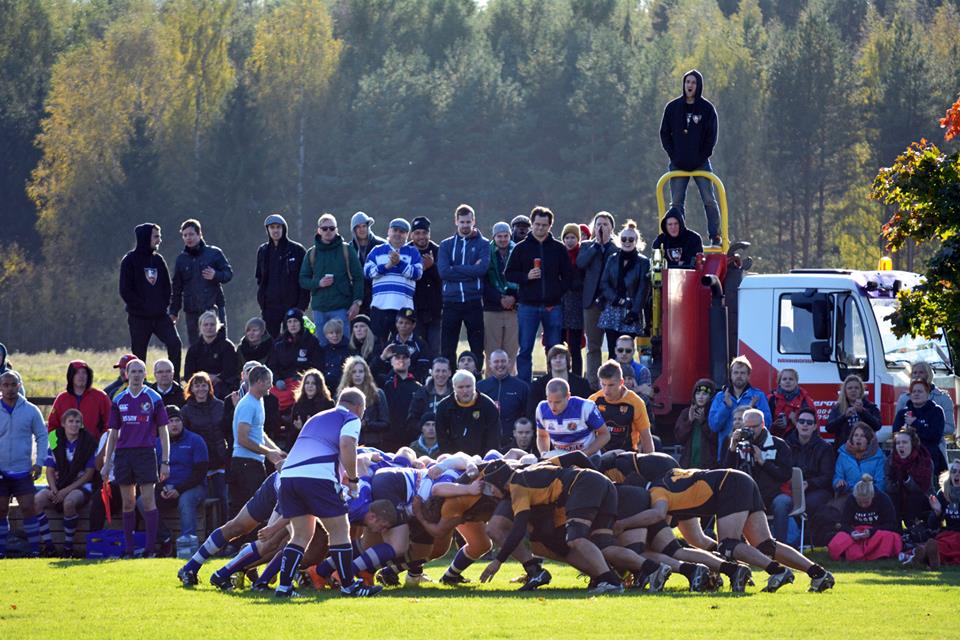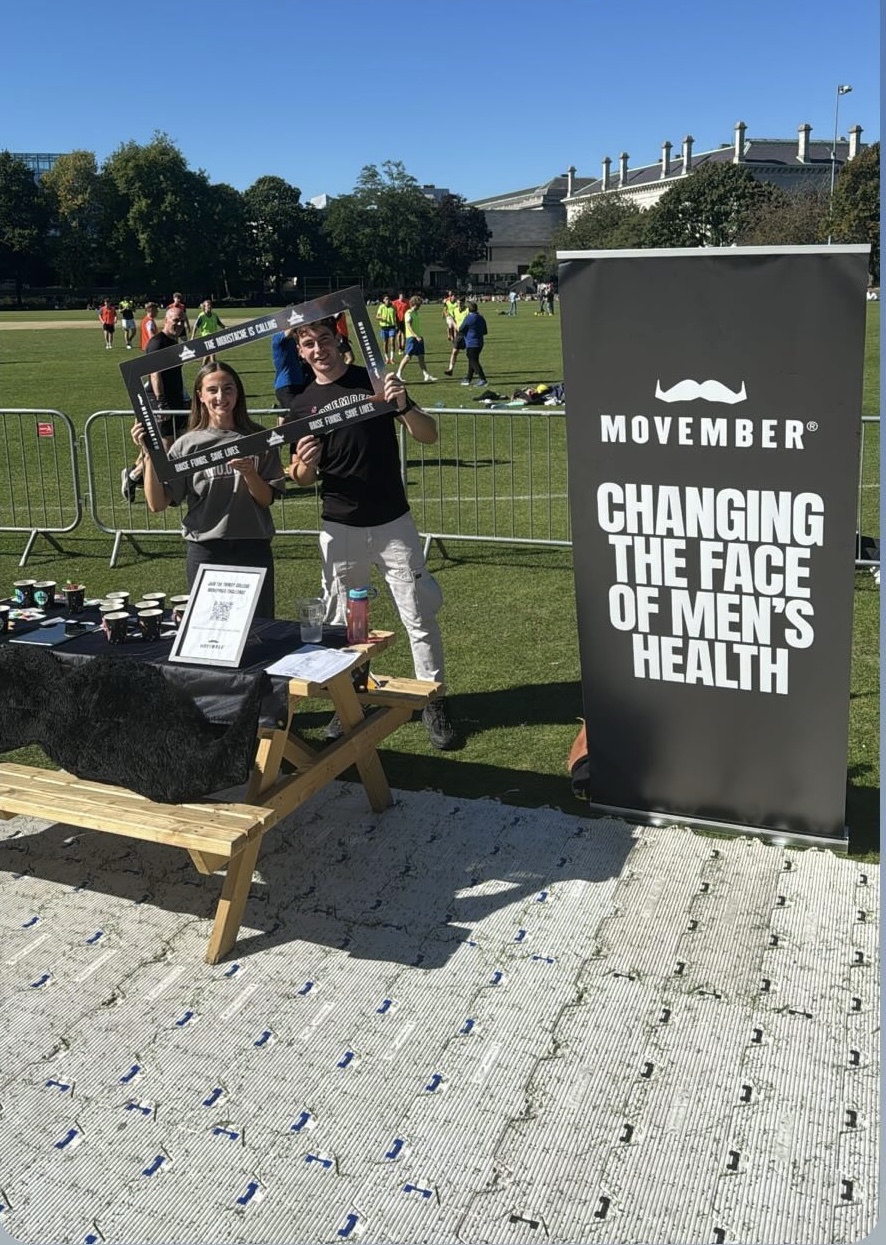Ross Mullen | Senior Staff Writer
Finland currently sits 98th in the International Rugby Board World Rankings, four places above the bottom. Countries ranked higher than Finland include Swaziland, the Bahamas, Zambia and Tahiti. Rugby trails significantly behind football and ice-hockey in terms of popularity, and with a population of just under five and a half million, faces an uphill struggle to attract players and fans. However, the sport is only in the early stages of infancy and recent events such as the 32-10 victory over Norway, indicate a bright future for the sport.
I arrived in Helsinki at the end of August as an exchange student. I had been in contact with Helsinki Rugby Club (HRC) beforehand about training with the team, and hopefully getting some game time. Due to the severity of the winter in Finland, the rugby season takes place from May until September. When I arrived, Helsinki were currently on a 6 game unbeaten streak with 3 games left until the inevitable semi-finals. There are 10 teams in the top division of the Finnish Rugby Championship, with a further 5 in the second division, while the Ladies division contains 6 teams. While this may appear small at first, it is quite impressive considering HRC was only formed in 1999, while the first ever National Championship took place in 2002.
Helsinki Rugby Club encompasses an eclectic array of nationalities: native Finns, to numerous Brits, a collection of French, an Italian, a southern hemisphere contingent, an American and then me, the solitary Irishman. From the outset you can tell the club is based on a strong sense of community, which can be said for Finnish rugby as a whole. For those involved in the sport, their commitment stems from a simple love of the game and desire for it to flourish in this country. The growth of the game from its humble beginnings is a testament to the work carried out by entire rugby community within Finland.
I was anxious at my first training session: the sheer size and bulk of my Nordic counterparts was enough to make me doubt my desire to continue playing rugby abroad. While the overall skill level might not match home, it is more than made up for in pure strength and willingness. For the majority of native Finnish players, rugby has been a sport adopted in latter years rather than ingrained from a young age. Whereas many Irish people will have experienced the game in some fashion from childhood, for Finnish people it is a foreign concept. Youth rugby is almost non-existent, but this is currently undergoing a significant transformation as representatives from clubs are visiting schools to introduce the game while underage setups are also being developed. However, the dominance of ice-hockey is not completely negative. The physicality necessary for that game translates well to rugby, meaning the transition for Finnish people is focused on developing a skill set with less need to worry about their eagerness for physical contact.
My first game was against Kuopio, a city located in the north of Finland. Once again, HRC strolled to victory with a 39-15 win. The concept of rugby values is deeply embedded in the culture of the game in Finland. Speeches from the opposing captains are made directly after the game while cans of beer are casually tossed around before the team heads for a sauna together in typical Finnish fashion.
Saunas are a core aspect of Finnish life, with most homes having their own personal one, but the event differs slightly from that back in Ireland. No clothing is allowed, whatsoever. No bikinis for women, no swim shorts for men. Not anticipating the stark nature of the experience, I bottled the first time. After reaching the changing rooms of the swimming pool and sauna I quickly made a haphazard excuse as to why I had to leave, one which I duly paid for at the pub later on.
Our next game was away in Tampere. The youth of the sport in the country was reflected by the uncouth posts which were positioned on the deadfall line rather than the try line. Similarly I was told another club simply attached gaudy posts atop the permanent football goals, giving kickers a much easier task! We secured our semi-final place with a tight game, most notable for our collection of four yellow cards in quick succession, leaving us to defend vigorously with 11 men. A matching victory by the Ladies team against the opposition set up a double-header, HRC v Tampere in the men and ladies semi-final.
Our ladies team emerged victorious with a last minute try in the morning, so the pressure was put on the men to repeat the achievement. We duly succeeded with a 24-0 victory which failed to reflect the tense affair. After this game, I was unable to hide from the sauna. While strange at first, I stripped accordingly, finding it easier to simply follow suit rather then question the oddity of the culture from an Irish perspective where nakedness is not something that sits comfortably. My reservations were eased when a fellow foreigner turned to me and said “Don’t worry mate, I’ve been here years and I still don’t get it!” Nonetheless I carried on, braving the sauna with nothing more than a square of paper to sit on. Even though my awkwardness swiftly subsided, the sauna experience is something I’m still not completely sure about. While fine among friends and team-mates, the prospect of sitting naked alongside strangers does not appear quite as pleasant.
The season culminated in finals day where we would meet Warriors, a team which also hailed from Helsinki and could count themselves as the most successful rugby club in Finland having won five consecutive championships from 2008 to 2012. However, it was a day where the blue and white of HRC would triumph over the yellow and black of Warriors. The entire programme of the day encapsulated the family nature of the club I could now proudly consider myself part of. Breakfast was had at our local sponsors in morning, the Woolshed, where the mens and ladies teams ate together alongside a multitude of supporters, past players and family. The finals took place in Porvoo where HRC nobly proceeded to a deserved 12-5 victory. This ended the longest stretch in Finnish rugby between one national championship and a successive one: 11 years. It was also the first time a team had gone unbeaten for an entire season, an incredibly difficult feat to achieve at any level. We had just won the Finnish National Championship, the highest level of rugby in Finland. Not bad after a month in Finland!
Celebrations ensued on the pitch in Porvoo as bottles of champagne erupted, one players even finding his young son’s jacket drenched despite it being a blissfully sunny day! The coveted ‘Poika’ (trophy in Finnish) was filled and refilled as all involved enjoyed the taste of victory which closely resembled a concoction of wine and beer. The festivities continued in Helsinki and was a memorable night for all involved, even more memorable for those audacious enough to take a local drunk tattoo artist up on his offer of free tattoos for the team, all of which were carried out inside the bar. After much deliberation, I thankfully declined.
Rugby in Finland is modest, but is growing at a strong rate. Clubs such as HRC all around the country are committed to developing and nurturing the sport. From my short experience thus far, it is clear the talent and structure does exist for Finland to continue the progress it has made over the last 20 years. Focus has moved from simply fielding teams and having a league to developing its own local talent. The influx of foreigners has obviously been instrumental in the rise of Finnish rugby, but the concentration being directed youth and juniors is integral to the prosperity of the game. It is impossible to know for definite what state the sport will find itself in in the future but one thing is certain: Finnish rugby is growing and will only continue to do so.
Photo by Michael Ayling







